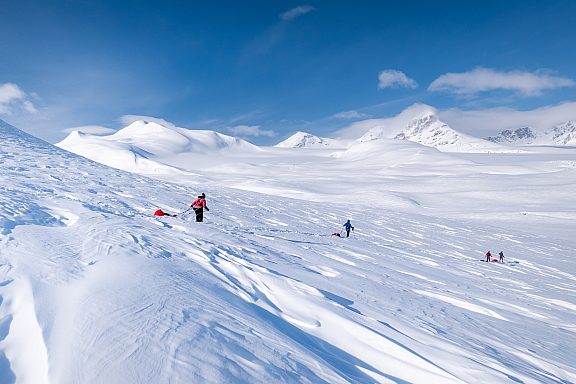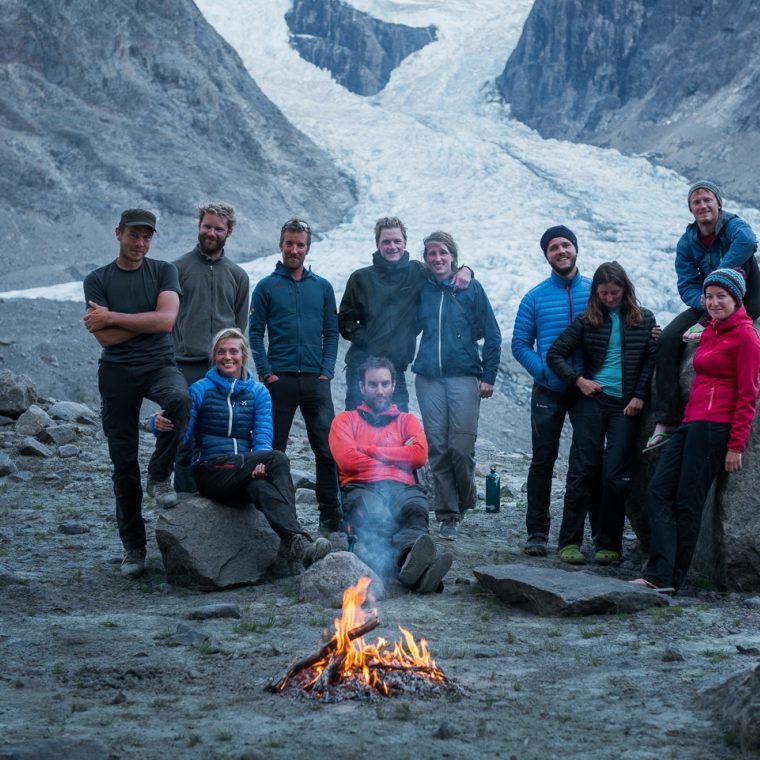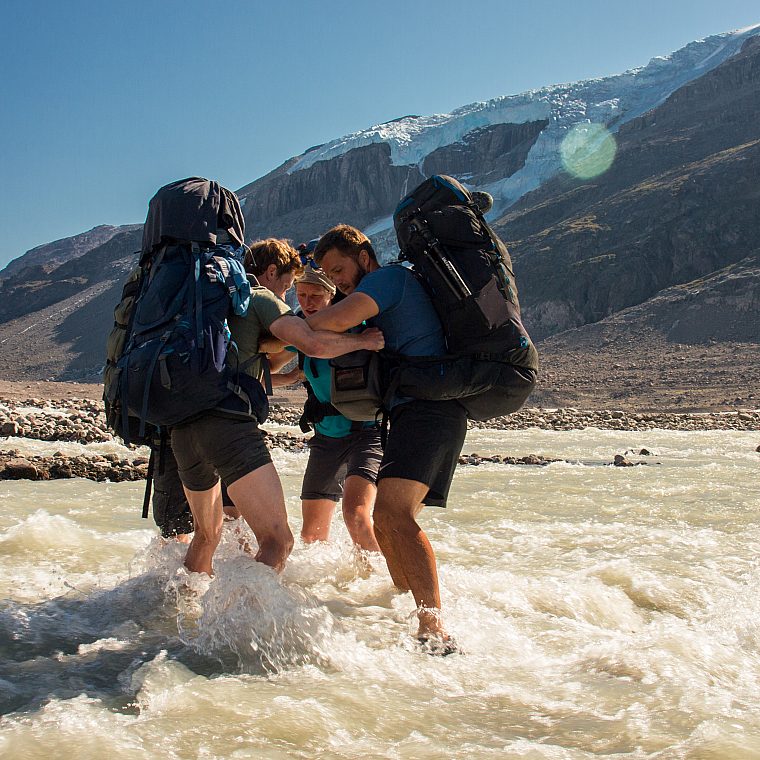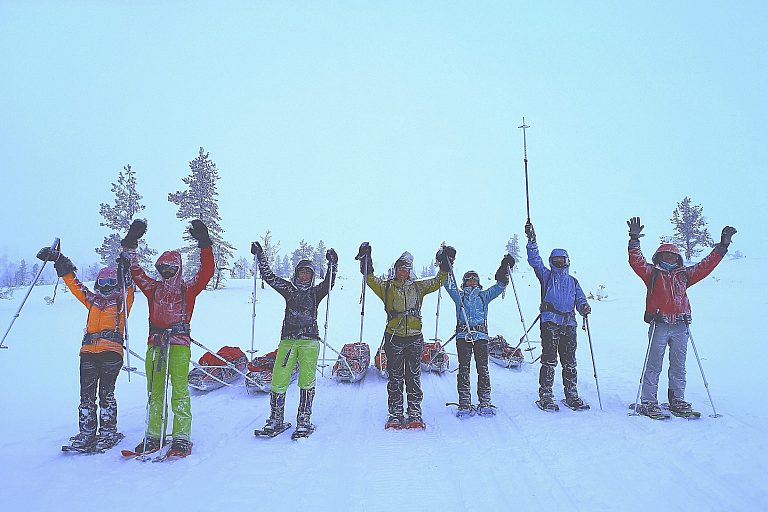
Dressing for the arctic winter
The importance of qualitative clothing for winter expeditions in the Arctic cannot be underestimated. Temperatures sometimes drop to -30°C or below, and shelter is hard to find once above the tree line. In such conditions, hypothermia and frostbite pose a real risk. Nevertheless, it is perfectly possible to set off on winter hikes safely and comfortably - appropriate clothing and equipment are prerequisite number one.
Expected conditions
Which weather to expect primarily depends on your destination and travel period. In January and early February, the sun hardly rises above the horizon during the short days, and temperatures regularly drop below -30°C in clear, calm weather. From March onwards, the days get longer quickly and the sun gains strength. Although the nights can still be bitterly cold, daytime temperatures start to go up.
In Finland (Arctic Wonderland Expedition, Taiga Aurora Expedition, Russian Crossing) the sheltered Taiga forest is always close by. Exposure to the wind is limited. Starting in March, our expedition season in the mountains along the west coast of Scandinavia begins (Norway, Sweden). As the daylight period gets longer and because of the proximity to the ocean, temperatures here are often more temperate (0°C to -20°C). However, as we ski high above the treeline most of the time, we are very exposed to the wind, and conditions are often more demanding than in Finland.

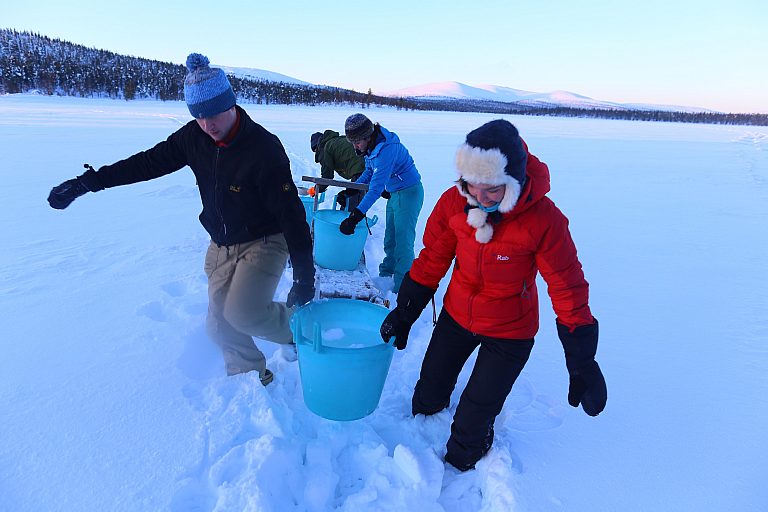
Dressing in layers
In winter, finding the balance between being sufficiently warm, but without overly perspiring, is even more important than in summer. Once you're on the go you will easily get too hot, but as soon as you're stationary during a break you might cool down very quickly.
The layering principle for clothing is therefore especially important, and implies that you use several thin layers, rather than one thick layer. The air between the layers provides extra insulation. When you get too hot, you can easily take off a single layer.
Example of winter clothing
High-quality merino thermal underwear for both upper and lower body are an ideal base layer. Most merino wool underwear is now combined with limited synthetic components. Such thermals are warm, comfortable, dry quickly, and evacuate sweat in an efficient way. They are a must-have for any winter expedition.
A fleece as a second layer (mid-layer) is crucial as added insulation. Breathability, which allows body moisture (sweat) to dissipate quickly, is as important as the amount of warmth the sweater retains. In cold weather, you can combine two mid-layers for extra warmth. Sweat is your worst enemy, so don't dress too warm though. In general, you are probably dressed appropriately if you get a little cold after a break.
Your outer layer (shell) consists of a windstopper or waterproof jacket (with hood) and ski pants. Zippers under the armpits can help evacuate moisture from your base layer and mid-layers. An insulated (lined) ski jacket is often too warm for this kind of trip. The same goes for ski pants; (lined) softshell pants with any thermal underwear underneath are ideal. Thick ski pants will be too hot.
Your extremities are the part of your body most sensitive to the cold, which can lead to frostbite if your clothing is not adapted to the condition. Therefore, warm mittens are an absolute must-have. A warm but breathable beanie and wind-stopping buff are crucial to protect your ears, cheeks, and nose from the wind. Frostbite to non-covered parts of the face (cheeks, eyebrows) can occur quickly in strong winds combined with cold temperatures. Ski goggles are obligatory in stormy weather(but it is good to carry regular wrap-around sunglasses for warmer days too).
A winter down jacket is also mandatory for most expeditions. A down jacket will provide some added comfort in the evening at the hut (e.g. going to the toilet, while watching northern lights etc.), but it also provides a safety net in case of unexpected circumstances that might cause us to stop for a longer period during the day.
During our Svalbard expeditions, we often camp at exposed locations. On such trips, you will continuously be exposed to the cold, and there is no opportunity to dry gear as we can do in the huts on our other trips. We will take additional down clothing (expedition jackets, down pants, etc.). Since it is crucial that our sleeping bags and shoes also remain dry throughout the entire trip, we will also use so-called vapour barrier liners on our feet and in our sleeping bag; an impermeable layer that prevents perspiration from entering the fabric (and becoming ice).
Rental of down equipment
A full set of qualitative winter gear is a big investment. We rent out down jackets, down mittens and sleeping bags at competitive prices to our expedition customers.



1 -
© Benny Verberck
2 -
© Brent d'Hooge
3 -
© Brent d'Hooge
